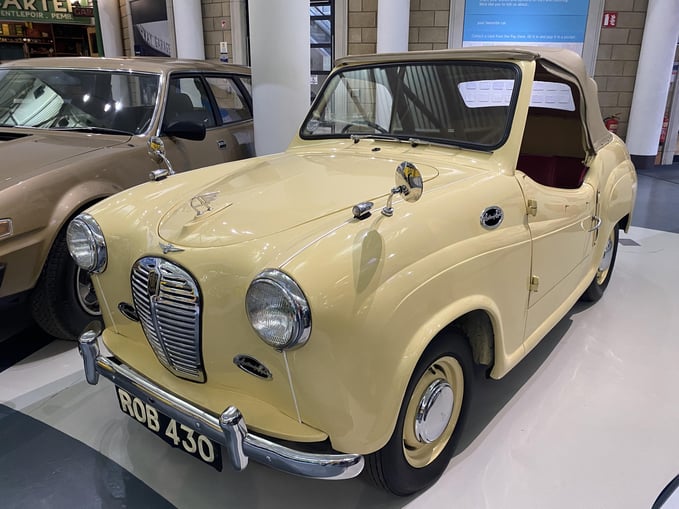J12 M40
British Motor Museum
J12 M40
British Motor Museum

The A30 was introduced at the 1951 Motor Show and carried the famous ‘Seven’ name because it was the first new post-war small car from the Austin company. It was also the first Austin to use unitary construction bodywork and also the first to use the overhead valve engine later known as the BMC A-series.
This car is the only known factory produced convertible A30 model (there have been many cars converted from saloons). The car is also known as a ‘Sports model’. It was largely hand built, although the front wing panels are standard A30 items. Noticeable are the very deep sills, so designed to give the body some rigidity. The boot is much larger compared to the saloon because the space extends to where the rear seats would have been. The front and side vents, from the A70 model, were added at a later date.
The A30 convertible never went into factory production. Other attempts were made at designing a small open two-seater car, including a fibreglass bodied prototype designed by Dick Burzi in 1953, using A30 mechanical parts.

British Motor Industry Heritage Trust, Registered Charity in England & Wales: 286575
Banbury Road
Gaydon
Warwickshire
CV35 0BJ
If using a Sat Nav for directions we recommend you enter the British Motor Museum as a point of interest rather than using the postcode.














.png)


